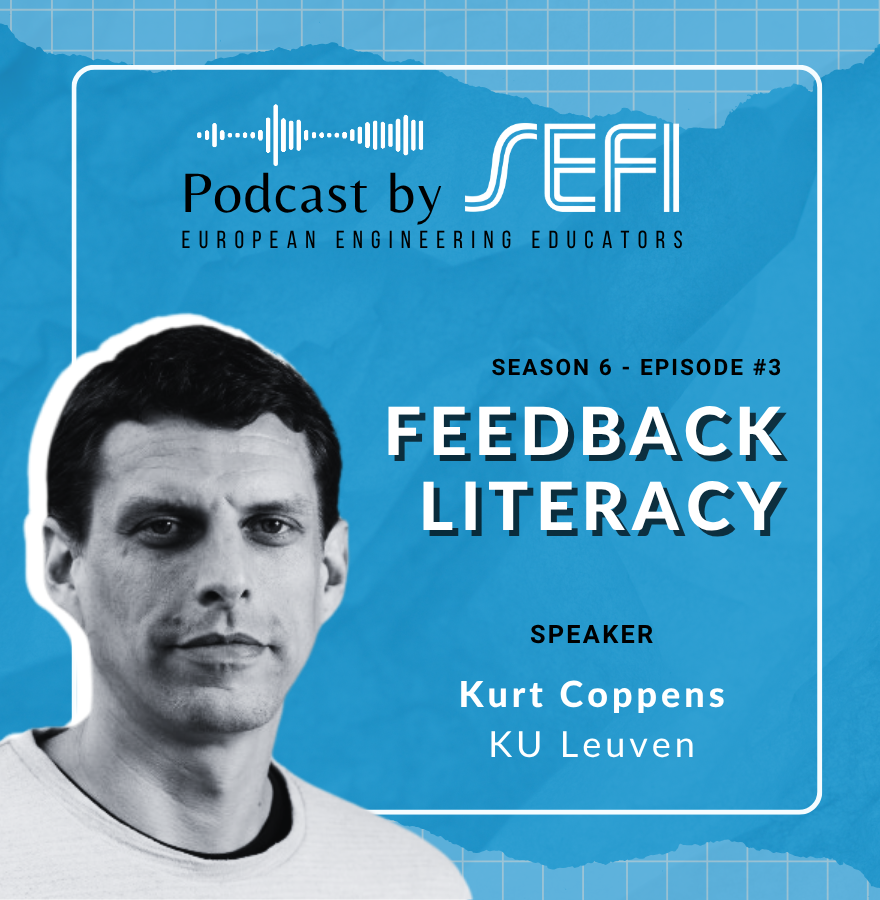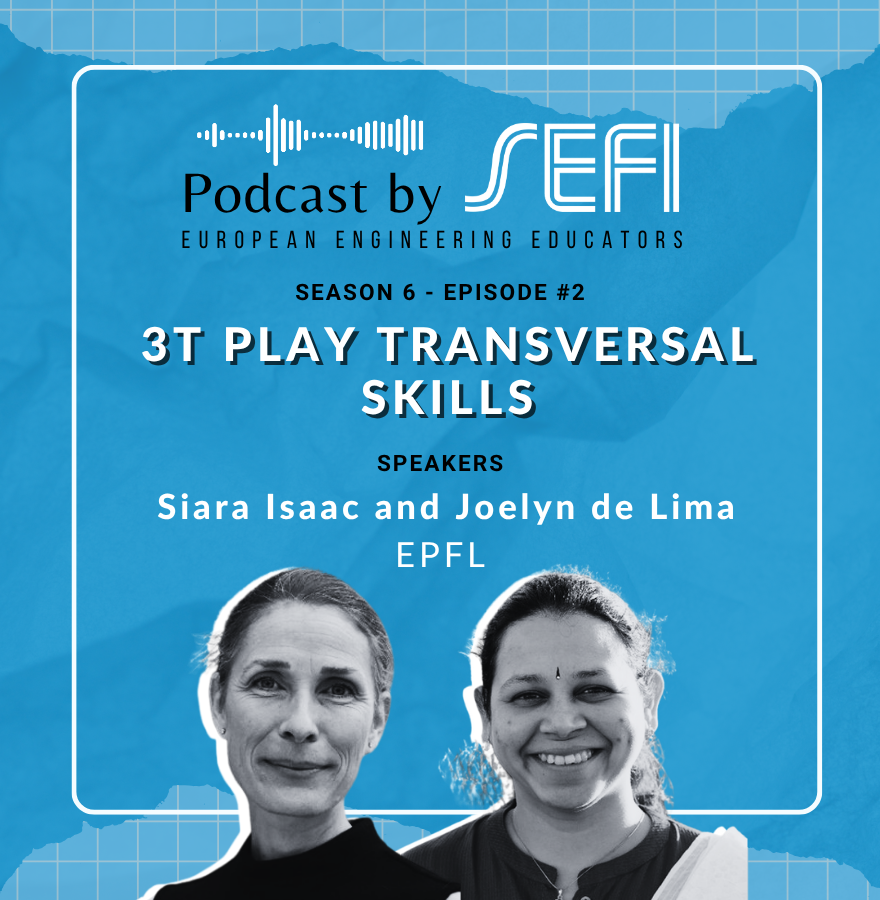Feedback is a somewhat perennial topic within higher education (HE), with increasing emphasis on students…
Chris Smith from GCU on work-based learning with Neil Cooke and Natalie Wint

Work-based learning involves universities and industry partnering to deliver a student’s education. Policy makers are questioning the fitness of purpose of degrees because of funding stresses, perceived skills gaps, and society’s increasing expectation that engineers will provide solutions to global sustainability challenges. Accordingly, we hear demands for alternative models of finance and delivery which include various levels of private sector involvement.
In this episode, we talk to Dr. Christopher Smith from Glasgow Caledonian University in Scotland (UK), co-chair of the SEFI Special Interest Group (SIG) on Continuing Engineering Education and Lifelong Learning, who has an international reputation in work-based learning and the design of flexible work-based learning programs.
*The rest of the article will summarise the key points discussed.
The term ‘work-based learning’ can mean different things to different people.
To Chris, work-based learning is about a collaboration in education that focuses on allowing an individual, whether that be somebody in a full-time or part-time program, to engage in authentic learning that equips them with theories and an understanding of how to apply them in the context in which they’re going to practice. This often involves a ‘triadic’ partnership between an education institute, the students that are studying, and the work context, often in the form of an employer.
Chris explains how Gray (2001) categorized work-based learning according to whether it was: ‘for work,’ which involves preparation for work and could include work placements and internships; ‘at work,’ which consists of either formal or informal learning in the workplace and could include company in-house training programs; and ‘through work,’ which involves learning through work activities and relating this to education and which could take the form of a program that balances formal learning with company activities and learning.
Examples of work-based learning include internships and placements; (degree) apprenticeships; continuing professional development (CPD) courses; and bespoke co designed programmes. Chris talks about examples whereby students work on real, authentic problems that industry want solutions to. He explains that this provides students with opportunities to engage with industry and receive feedback which allows them to develop skills in communication.
Chris stresses that the variety of different forms of work-based learning means that each program team or each institution has to make a conscious decision about their vision and what they are trying to achieve in introducing it into their programs. This may involve consideration for the time available to both industry and academics; what each party wants to achieve, and how this aligns with strategy; and the training needs of academic staff to ensure they are confident in managing relationships.
Work-based learning has multiple benefits.
On a practical level, Chris suggests that collaboration with industry can help diversify the revenue streams of universities. At the same time, he acknowledges the increasing emphasis on general competencies in light of the speed of change in the job market and the need to address global challenges. He claims that this means that young people should have a better understanding of the world, but also highlights the need for practicing engineers to develop so that they are better prepared to take on these challenges.
For students, benefits can include being more equipped for the workplace but also having a better understanding of themselves and their favored career path.
Work-based learning involves multiple stakeholders and tensions.
Chris refers to the work of Ferrandez, Kekale, and Devins (2016), who identified three key pillars involved in work-based learning, namely the organizations involved, the people involved, and the curriculum. They then spoke about the interaction between the pillars and the need to balance, for example, market needs with academic quality standards, as well as the need for strong communications and adaptation in order to achieve mutually beneficial outcomes.
Partners can be involved to different degrees.
Chris describes Arnstein’s ladder of participation, which can be used to determine where programs and institutions currently sit in terms of their work-based placement offerings but also to help determine new opportunities, The ladder consists of 8 rungs, with the bottom two rungs representing the lowest level of participation ‘nonparticipation’. Rungs 3-5 constitute ‘tokenism’ and rungs 6-8 ‘degrees of power.’ At the highest rungs of the ladder, there should be more collaboration between the parties involved. In the context of work-based learning, tokenism could involve informing and consulting or choosing something in a constrained way (for example, a project title from a list) or, from an industry perspective, may consist of a letter of support from industry for a program
change.
Resources:
A selection of Chris’ work in this area can be found below:
https://researchonline.gcu.ac.uk/ws/portalfiles/portal/74519901/p1644_p1653.pdf
Other work referenced in the episode:
Gray’s different types of work based learning:
Gray, D. (2001). A Briefing on Work-based Learning. York: Higher Education Academy
Ferrandez, RM and Kekale, T and Devins, DM (2016) A Framework for Work-Based Learning: Basic Pillars and the interactions between them. Higher Education, Skills and Work-based Learning, 6 (1). ISSN 2042-3896 DOI: https://doi.org/10.1108/HESWBL-06-2014-0026
Arnstein’s ladder of participation:
Arnstein, S. R. (1969) A Ladder Of Citizen Participation, Journal of the American Institute of Planners, 35:4, 216-224, DOI: 10.1080/01944366908977225


